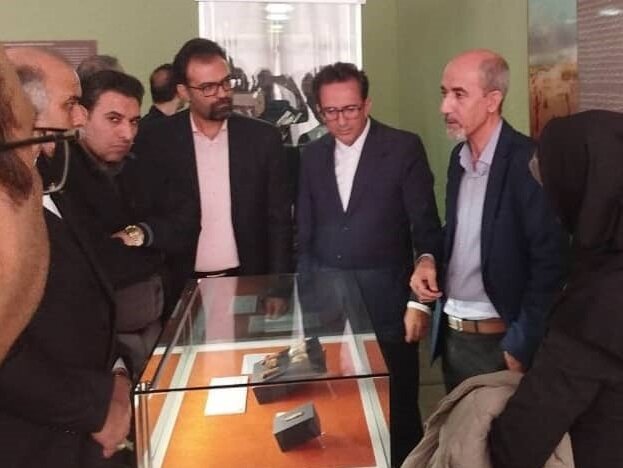Specialized tour at National Museum of Iran showcases Paleolithic heritage

TEHRAN - On Wednesday, the National Museum of Iran hosted a specialized tour of its Paleolithic galleries, led by Fereidoun Biglari, head of the Paleolithic Department and cultural deputy at the museum.
The tour, attended by approximately 25 tour guides, offered an in-depth exploration of Iran's Paleolithic heritage.
Participants had the opportunity to examine a variety of stone tools from the Lower, Middle, Upper, and Epipaleolithic periods.
Key highlights included the tooth of a Neanderthal child from Wezmeh Cave, the oldest human skeletal remains on display at the museum, as well as animal bones from the Paleolithic era. Other significant exhibits included the earliest known personal ornaments, older than 35,000 years, discovered in Yafteh Cave, as well as cave bear fossils and stone tools from the lower paleolithic cave site of Darband Rashi in Gilan. The group also had the rare opportunity to touch and handle experimentally made stone tools made by Biglari himself, offering a hands-on experience of ancient tool-making techniques.
The three-hour tour featured an interactive Q&A session, and attendees were provided with a detailed brochure to further explore the Paleolithic galleries.
This initiative, part of the museum’s ongoing educational efforts, aims to equip tour guides with the latest research on exhibits spanning prehistoric, historical, and Islamic periods, ensuring they can share accurate and comprehensive knowledge with visitors.
The National Museum of Iran, established in 1937 in Tehran, serves as the country’s principal museum and a vital institution for preserving and showcasing Iran’s archaeological and cultural heritage. The museum houses a diverse collection of artifacts that span from prehistory to the Islamic era, including invaluable pieces such as ancient pottery, textiles, and coins. As a center for research and education, the National Museum plays a crucial role in fostering an understanding of Iran’s rich history and its connections to other cultures, particularly through significant collections like the Chinese ceramics that highlight the interactions along the Silk Road.
AM
Leave a Comment